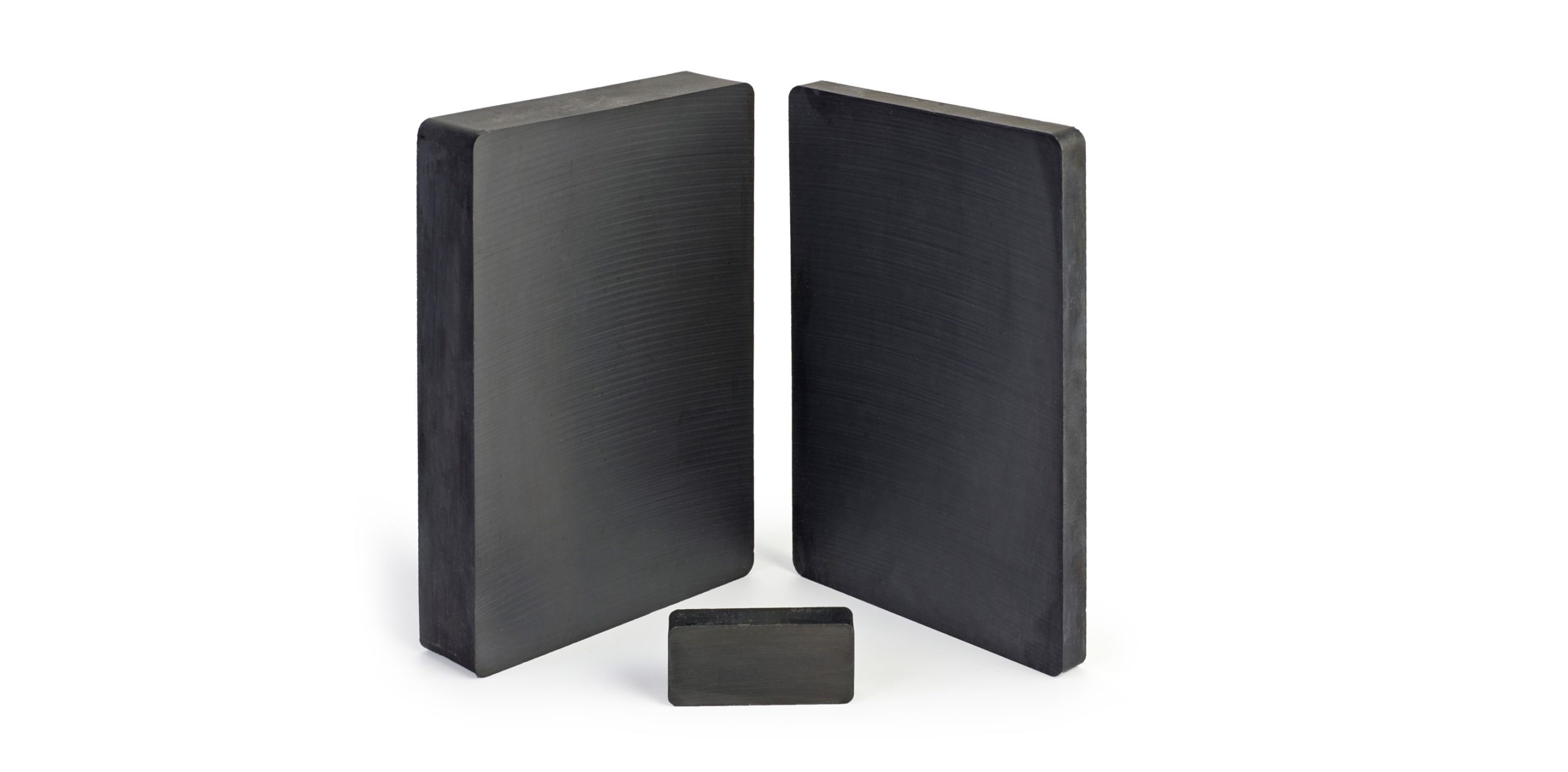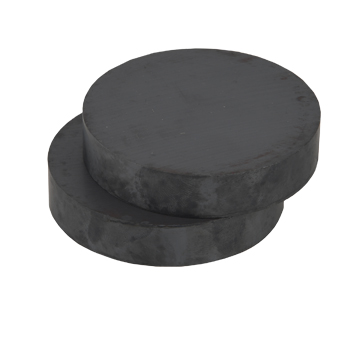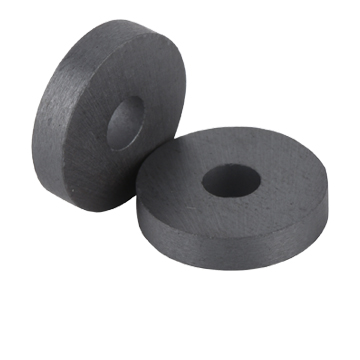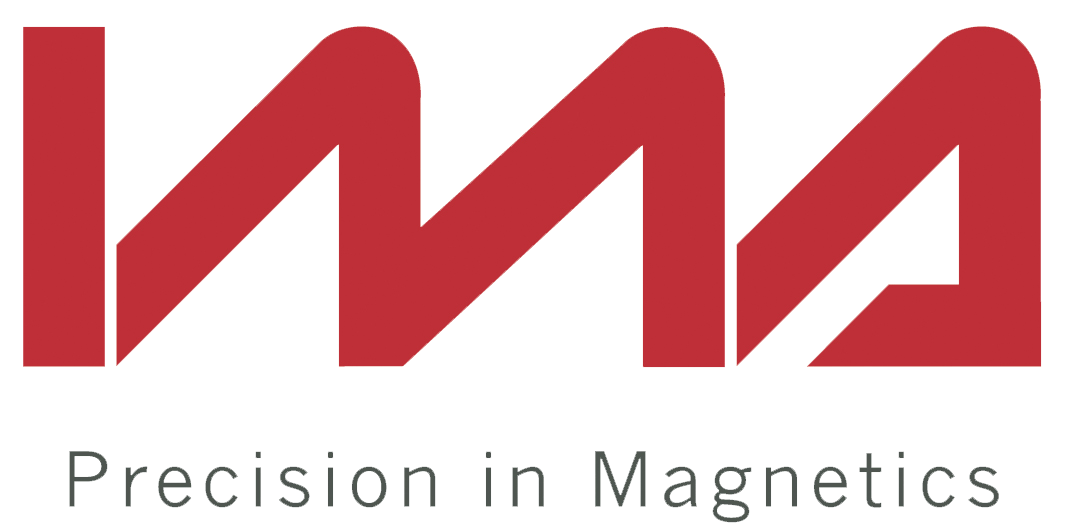The first ferrite to be used was magnetite which was used for compasses. It was not until the end of the 19th century that the components which form the alloy of the ferrite magnet became established. Ferrite magnets can also be called ceramic magnets, due to their visual appearance being a dark gray metallic oxide resembling porcelain.
Depending on the coercivity of the ferrite we can find:
Hard Ferrite Magnets: Hard ferrite magnets are those with high coercivity, so they are not easy to demagnetize. Hard ferrite magnets are composed of iron, cobalt, barium, and strontium → these are used for speakers and microwaves among others.
Soft ferrite magnets: Hard ferrite magnets are those with low coercivity, unlike hard ferrite magnets, which are easier to demagnetize. Soft ferrite is composed of a mixture of iron and light metals (nickel, aluminum, or manganese) → these are intended for electrical transformers.
When working with anisotropic qualities, an alignment of the particles is made in a single direction, obtaining magnetic characteristics. In addition to being anisotropic, they can also be isotropic, unlike anisotropic, the clamping ferrite magnet strength is lower.
Large ceramic magnets have high hardness and high brittleness. In addition, with these magnets, you can work from -40ºC to 250ºC. Ferrite magnetic permeability is so high, which means that this type of permanent magnet, like others with high magnetic permeability, has a great power of attraction.
Black magnets are the cheapest on the market. Ferrite magnets have a high corrosion resistance and, therefore, are one of the most appropriate products for different outdoor uses thanks to being stainless. They are probably the best alternative to neodymium magnets since they are not only resistant to moisture and corrosion but also resistant to different types of chemicals.













